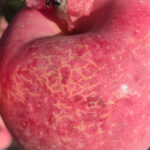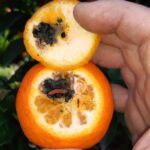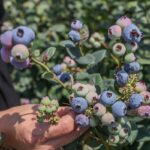Mexican Fruit Fly quarantines spread in Texas citrus zones

Mexican Fruit Fly quarantines have expanded in Texas. Known as Mexfly or Anastrepha ludens, the pest has been a subject of concern for the USDA’s Animal and Plant Health Inspection Service (APHIS) and the Texas Department of Agriculture (TDA).
A quarantine was announced March 11 for Zapata County, Texas, followed by another quarantine announcement on March 21 for Brownsville, Cameron County and Sebastian, Willacy County. The next day, APHIS and TDA extended yet another to Sullivan City, Hidalgo County.
“The establishment of the Zapata quarantine is in response to the confirmed detection on March 7 of a wild mated female Mexfly from a trap in a grapefruit tree in a residential area. The quarantine encompasses approximately 39 square miles. There is no commercial agriculture in the quarantine area,” APHIS said.
“The establishment of the Brownville quarantine is in response to the confirmed detection on March 5 of a wild mated female Mexfly from a trap in a grapefruit tree in a residential area. The quarantine encompasses approximately 66 square miles. There are 49 acres of commercial citrus in the quarantine area.”
Forty-four acres of commercial citrus have been affected by the Sebastian quarantine area. That zone, encompassing approximately 71 square miles of Cameron, Hidalgo, and Willacy counties, was added to the list after the detection of a wild mated female Mexfly from a trap in a sour orange tree in a residential area.
Meanwhile, three wild-mated female Mexflies were found in traps in orange trees in residential areas of Sullivan City. That quarantine covers 68 square miles and does not affect any commercial areas.
“APHIS is applying safeguarding measures and restrictions on the interstate movement of regulated articles to prevent the spread of Mexfly to non-infested areas of the United States, as well as to prevent the entry of these fruit flies into foreign trade,” the agency said.
“APHIS is working with TDA to eradicate transient Mexfly populations following program guidelines for survey, treatment, and regulatory actions.”
Quarantines can be reviewed on the APHIS fruit fly website, which describes all current federal fruit fly quarantine areas.
Texas had a more than 27,000 acres of citrus as of 2022, according to the USDA. That acreage is only slightly above the 2017 value of 26,188.
More than 16,000 acres of the 2022 crop was dedicated to grapefruit. That acreage declined from 17,785 in 2017. Meanwhile, productive orange acreage increased from 7,573 to 9,611 in 2022.














































